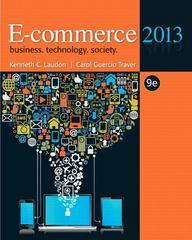
1. Nature decides whether the bank is dovish (probability 2) or hawkish (probability z ). 2. The firm selects Ty 3. The central bank, having observed 7, selects my. 4. The firm observes only 71 (importantly, it does not directly observe whether the bank is dovish or hawkish) and chooses 72. Problem 4 Suppose that firms make production decisions based on their expectations of the mon- 5. The central bank, having observed 72, selects 72. etary policy that the central bank will choose. We will consider a game where the firm makes its To simplify things, suppose for the rest of this problem that y* = 4. decision before the central bank actually sets its policy, having observed the firm's decision. For You will now solve for a separating equilibrium of this game. To fully describe a perfect simplicity, we restrict the central bank's policies to choosing the level of inflation (7) and represent the firm's actions by the expectation it forms about inflation (7). Bayesian equilibrium, we must state the strategies as well as beliefs. In a separating equilib rium, the two types ("hawk" and "dove") of the bank act differently in the first period. Denote The firm would prefer to make production decisions based on a more accurate prediction. So the closer me is to 7, the higher the firm's payoff: by my(74) and T (74) the actions chosen by the bank when it is a hawk or dove respec- tively (remember that these are functions of my). Denote by q(71 ) the probability that the firm U,( TI, The ) = - ( 71 - 71 8) 2. attaches to the bank being dovish after it observes m, in the first period. Since, in a sepa- rating equilibrium TY() # 17(n) along the equilibrium path (that is, when the firm plays its Output (y) in this economy is given by equilibrium strategy of 74), the firm must believe that the bank is dovish with certainty upon observing it? (74) and hawkish with certainty upon observing , (n): so q(? ((nt.))) = 1 and y = 0.75y* + (1 - me) 9( T ( (724 ) ) = 0. where y* is the efficient level of output. This expression for output shows that the market is not (i) What action should the central bank take in the second period (72)? This will depend on competitive and that surprise inflation positively affects output. The central bank's payoff is its own type as well as the action taken by the firm in the second period Ub ( 71, 71 8 ) = - CT2 - (y - y" ) ? (ii) As noted above, upon observing n (n;) or n7 (n;), the firm knows exactly the type of bank it is dealing with. What is it's optimal action in the second period when it observes where c > 0 represents the rate at which the bank trades off between two competing objectives: keeping inflation low (the first term) and getting output to reach the efficient level (the second term). (iii) In a separating equilibrium, the two types of the bank will play different actions m (7;) (a) As explained above, the firm selects me before the central bank selects n. Remember that and T-(7). What does the firm do in the first period? the central bank observes me before choosing n. What is the subgame perfect equilibrium of this game? (iv) The separating equilibrium is typically not unique. In particular, there are usually many beliefs that support the same actions: Bayes' rule only applies on the equilibrium path (b) What would the subgame perfect equilibrium be if the central bank moved first? and requires q(n (nt;)) = 1 and q(17 (nt;)) = 0 but does not tell us what q(71 ) should be (c) Suppose this game (where the firm moves first) is repeated twice over two periods. What for any 71 # nt? (ni), nur (nt;). Since we are free to choose beliefs off the equilibrium path, would the subgame perfect equilibrium be? Represent by m, and to the choices in the first we will set q(71 ) = 1 for any m1








